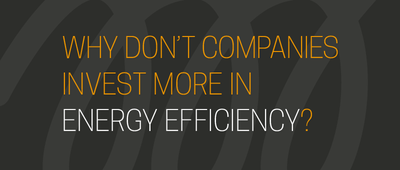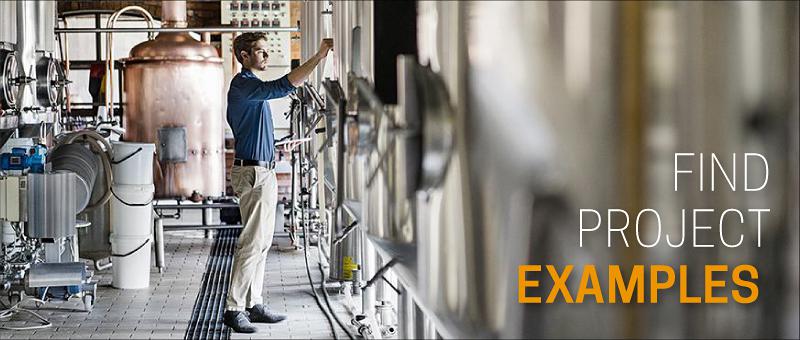Columnists: Jason Erwin, Borg & Co

Published on: 23 Apr 2020
Lean on efficiency to spark a greener recovery
Companies disrupted by COVID-19 should look to tried-and-true energy efficiency strategies to cut costs and position themselves for a speedier, greener recovery.
The story is still unfolding on the many ways COVID-19 will impact companies. Some hard-hit manufacturers and businesses have ramped down or ceased production. Medical supply and some other producers, on the other hand, are ramping up or re-purposing operations and personnel to meet rising demand for hand sanitizer, personal protection equipment and other crucial supplies.
During these turbulent times, cutting energy costs through tried-and-true energy saving measures allows companies to assert some control. At the same time, leaning operations will lower operating costs and build the foundation for a swifter, greener recovery.
Let’s look at a few short-term ways in which businesses can slash costs.
Power off equipment that is not in use
Providing power to equipment that is not performing any useful work is, simply put, costly and wasteful. IKEA Industry, which consumes more than half of the energy of the IKEA Group, notes that back in 2015 empty line electrical consumption at its plants accounted for at least 10-25% of the line total electrical consumption.1 Engelmann et al. shares another example of idle energy waste: over the course of one year a highly automated car manufacturing plant wasted over €400 000 in energy costs during non-productive, weekend hours.2 Building lighting and ventilation systems are another example: many systems run continuously without regard to occupancy levels.
Companies are rightly mindful of risks to production or tenant satisfaction if stand-by or control systems do not perform well. In this regard, the pandemic offers businesses a rare chance to test new approaches/systems when production is already limited/disrupted, or buildings/offices are vacant or lightly occupied.
For example, Volvo CE uses unplanned outages to learn which equipment and systems are difficult to re-start. They leverage disruptions to investigate the various sub-systems affected (e.g., hydraulic, controls, etc) and determine which equipment can be fully powered off and which must be left on to mitigate production disruptions. This approach allows them to mitigate production risk while still saving a lot of energy.3
Companies can also re-purpose under-utilized staff to participate in “energy treasure hunts.” In a previous column, Volvo CE reports how treasure hunts build team continuity, identify energy waste, and reduce costs by identifying equipment/lines that can be turned off.
For its part, IKEA Industry now implements stand-by strategies for its production equipment as part of its overall plan-do-check-act energy management approach to reduce energy intensity.
Assert control – match production with demand
Would you drive your car the same speed regardless of the road conditions? I hope not, since you would create unnecessary safety risks! Likewise, running motor applications continuously at the same speed is costly, reduces equipment life, and is sub-optimal from a comfort and safety perspective.
Companies should look for every opportunity to install variable speed drives (VSDs) on motor applications. Just as a throttle can adjust the speed of a car to different road conditions, VSDs control e.g., the HVAC system to match occupancy levels. Beyond energy cost savings there are multiple, non-energy benefits associated with VSDs:
- Improved process control
- Improved control over product quality or indoor comfort/safety, and
- Extended motor system life.
At the University of California, Irvine (USA) the Energy Team retrofitted its laboratories with variable air volume systems along with advanced monitoring and control features. Over a ten-year period, this initiative resulted in average laboratory carbon and energy savings of 50% without compromising occupant safety or comfort.4
Integrate energy systems with Facility Management System
A facility management system (FMS) is a control system that monitors and controls the building’s equipment. Integrating energy consuming systems into the FMS is useful in many ways, not least to identify energy waste and measures to cut energy costs.
For example, the IKEA Industry FMS makes it easy for the Energy Teams to identify savings opportunities by monitoring consumption and alerting staff when e.g., an air system or a fan consumes more electricity than it should.
Proactively fixing these problems cuts energy costs and provides other benefits including:
- Saving time on troubleshooting or maintenance
- Improving plant reliability and overall facility performance
- Providing better control over indoor environmental quality.
We don’t know how deeply or for how long the corona-times will impact companies. But idle times do not mean idle hands! Energy efficiency is a tool to take back some control and cut costs.
The energy efficiency community stands ready to assist with resources! For example, the EU-supported Multiple Benefits project (www.mbenefits.eu) is working with companies to identify high-value energy saving measures that contribute to a company’s competitive advantage. Many other local and regional energy programmes and organisations sponsor energy audits, offer technical assessments, or provide financial assistance to implement savings measures.
Don’t hesitate – contact your local energy efficiency provider or partner! Applying energy saving strategies today will reduce costs and, better still, serve as a springboard for a swifter, green recovery tomorrow.
Sources:
- IKEA Industry Energy Saving Handbook, 2015 IKEA Industry
- Engelmann and J. Strauch, “Aspekte zur Planung energieeffizienter Fabriken,” in 1. Braunschweiger Symposium für ganzheitliche Produktionssysteme, 2008. (cited in Weinert and Mose, 2014)
- Wollin, Johan, Volvo CE. Personal correspondence. April 2020.
- University of California Irvine. Smart Labs, Environmental Health & Safety. ehs.uci.edu, accessed 20 April 2020







